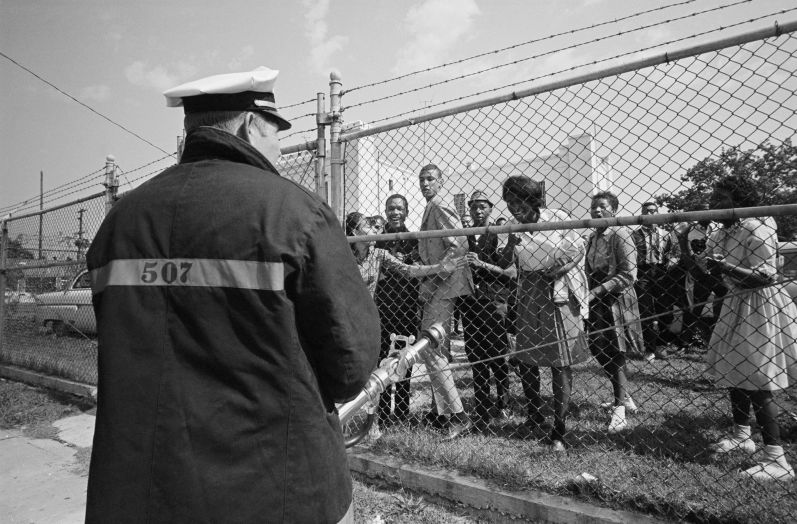When all else fails, the U.S. has always relied on the tactic of dividing in order to conquer. And while that approach hasn’t always proven successful, America, being the creature of habit that it is, still decided again to employ that shameful practice when it comes to migrants and their families at the southern border.
This time around, the optics have been especially damning, with images of minors (read: children) and adults alike being held in barbed wire cages – yes, cages – much like how stray animals are treated.
One aspect of this sad saga that has largely gone unmentioned is how similar the treatment of the migrants has been to how America has treated Black people, especially during the Civil Rights era.
READ MORE: Kamala Harris Calls For DHS Secretary To Resign Over ‘Tearing Apart’ Families
As shown in the photo below, a group of “Negroes,” as the Getty Images caption called them, were held in outdoor cages as punishment for protesting segregation in Orangeburg, South Carolina, in 1963. A closer look revealed showed an officer aiming a fire hose at dozens of Black people who were arrested simply because they wanted to improve the quality of their lives.

Source: Bettmann / Getty
Sound familiar? If not, it should.
Aside from the other obvious examples of Americans using cages to try to control non-Americans, such as the trans-Atlantic slave ships that held thousands of Africans in bondage en route to the U.S., the migrants’ conditions were also eerily similar to those held in Japanese internment camps in the early 1940s.
One forward-thinking artist was clearly ahead of his time last spring when he posted signs at vacant lots across the country bearing the message: “Lot reserved for Future Internment Camp.” While Snopes ultimately disproved how true the signs were at the time, they would go on to take on a new significance slightly more than a year later.

Source: WENN.com / WENN
Other “cages” which the U.S. has resorted to almost exclusively using against people of color include, of course, prisons. “Blacks are incarcerated five times more than Whites,” according to the Prison Policy Initiative, and “Hispanics are nearly twice as likely to be incarcerated as Whites.”
Going a bit deeper, some have also referred to inner-city public housing projects as cages; and for good reason, too.
“Public housing serves Black households at a rate substantially greater than their share of the renter population,” according to the U.S. Department of Housing And Urban Development (HUD). “Forty-eight percent of public housing households are black compared to only 19 percent of all renter households. Taking income into account does not alter this conclusion, since only 30 percent of households with incomes low enough to qualify for public housing are Black.”
As such, it’s probably not a coincidence that the public housing system in New York City, for example, has recently joined the growing ranks of public housing across the country that has exposed its residents to deteriorating conditions that have been called criminal.
SEE ALSO:
Everything We Know About Ex-NFL Player Kellen Winslow Jr. Sex Crimes Charges
Video Shows Chicago Paramedics Wasted Precious Time Before Trying To Save Shot Teen
These Pictures Show Putting People In Cages Is America’s Go-To Move When It Wants To Be In Control was originally published on newsone.com




